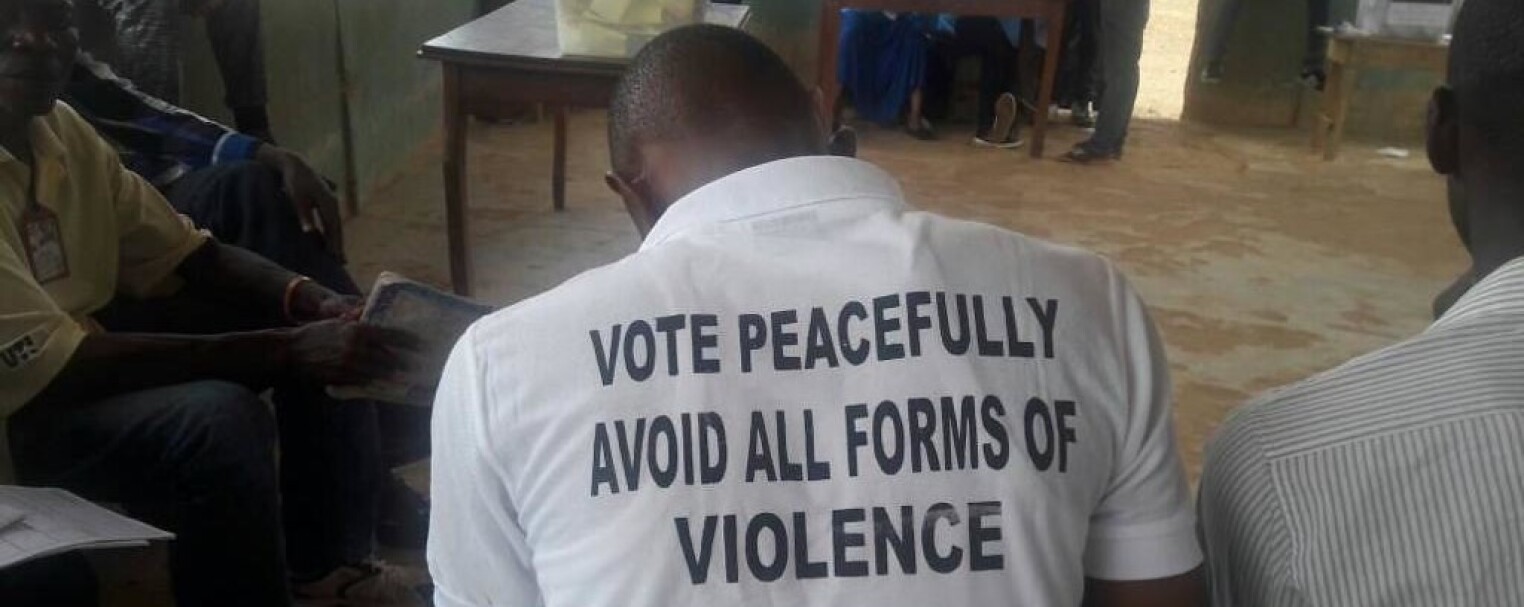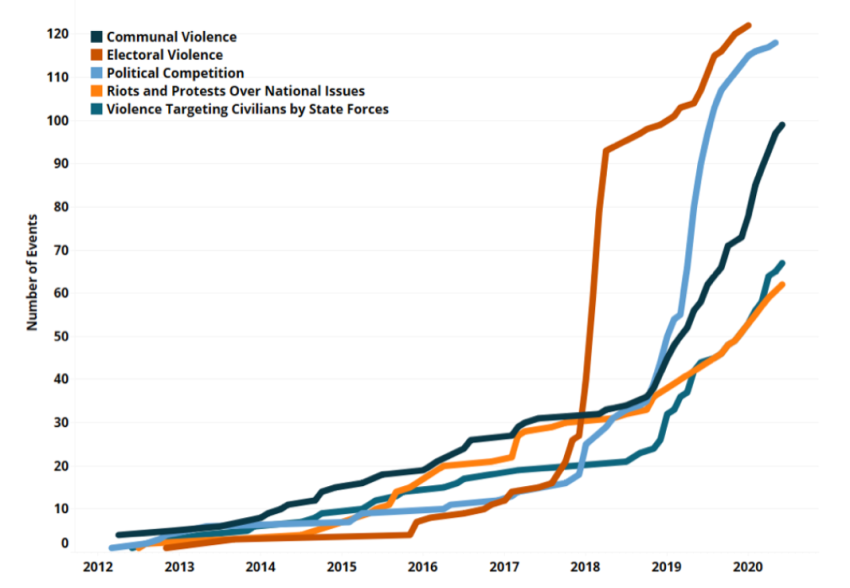Upcoming elections in Sierra Leone – a relapse to violence?

Photo by Commonwealth (CCBY-NC 2.0)
Markus Bayer, Fiona Wilshusen
7.6.2023
In theory, as stated by Birch et al. (2020), elections “ought to provide a nonviolent alternative to the use of force to adjudicate between rival claims to rule." In practice, however, elections are often the trigger for widespread violence, especially in new or less consolidated democracies. Earlier this year, for example, Nigeria experienced an outbreak of violence in the run-up to the presidential election on 25 February and the subsequent House of Representatives elections on 18 March. According to the Nigeria Election Violence Tracker – a platform to monitor electoral violence in Nigeria set up by the Armed Conflict Location & Event Data Project (ACLED) and the Centre for Democracy & Development – over 200 violent events involving party members and supporters were registered during the 12 months preceding the election. These resulted in the staggering number of nearly 100 fatalities. The violence was mostly directed against party supporters but also against local apparatchiks and prospective candidates. However, 44 of violence were also recorded against the offices or staff of the Independent National Election Commission (INEC) – an institution committed to free, fair, and credible elections for sustainable democracy in Nigeria.
Sierra Leone's Troubled Past: A History of Violence and Instability
Sierra Leone, another country with a history of violence, will hold presidential and parliamentary elections on June 24. Between 1991 and 2002, the country experienced a bloody civil war that claimed over 50,000 lives and saw the emergence of local self-defence militias such as the Kamajors. The conflict only ended after a military intervention by British and UN forces. With massive human rights violations committed by all factions, as well as the widespread proliferation of armed groups and weapons, the transition to peace has been a challenge. Since the transition to democracy, the country held four Presidential and Parliamentary elections. These resulted in the second peaceful political turnovers – Samuel Huntington’s rule of thumb test for democratic consolidation – in 2018 when Julius Maada Bio from the Sierra Leone People's Party (SLPP) unseated Samura Kamara from the All People's Congress (APC). However, according to Höglund (2009) a history of violence is a risk factor that makes electoral violence more likely, as it is associated with an "acceptance of coercion, threat and intimidation" and a "culture of violence". So, how likely is violence in the upcoming elections?
A look at the past shows that post-war elections have often been accompanied by violence in Sierra Leone. In the past, the two major parties SLPP and APC often used former combatants as "security forces" that were used to intimidate or attack opponents. The SLPP, in particular, was able to rely on the Kamajors – local militias who regarded themselves as ‘defenders of democracy’ during the civil war. Based on the loyalty they had shown to the government, many of the fighters developed a feeling of being entitled to some kind of reward. In most cases, this did not happen, and so the Kamajors - following the logic of Sierra Leone’s patronage system - continued to seek proximity to the party. These connections between parties and former fighters were further strengthened when, during the 2006 election campaign, many were released from prison to become part of the APC’s and SLPP’s “task forces” – basically party militias. A recent study by ACLED, Clingendael and the West Africa Network for Peacebuilding shows that these party militias are structured in a hierarchical and concentric manner, with civil-war commanders at the top of the hierarchy, serving as close protection units to party leaders. Next in line are “semi-institutionalized” militias around the party offices, who are available when needed. Finally, orbiting around these militias are large groups of party supporters, who move in and out of these semi-institutionalized militias and can be called upon in times of need. This is still the case today: The 2022 study “When the ‘war attitude’ persists” shows: Former fighters like the Kamajor still linger around party offices, waiting for opportunities to serve the party, hoping to be rewarded and gain access to the party elite.
The study by ACLED also shows that political violence was steadily increasing since the end of the civil war. Between 2016 and 2020, there were around 450 acts of political violence reported – most of which was driven by political competition.

Table I: Events of Political Disorder in Sierra Leone 2012-2020 Source: ACLED
For fear of escalation, political protests in Sierra Leone were banned for a long time. However, in August 2022, the ever-increasing cost of living brought people onto the streets. The protests quickly turned violent, resulting in more than 30 deaths. Consequently, the government imposed a curfew for almost a week. Since then, the political climate is tense. In a speech on the event, President Bio referred to the demonstrators as “terrorists” which should be seen as a clear warning sign and is symptomatic of the political climate. The communication of the two major parties, also contributes to the escalation of the situation: Hostile rhetoric - often with an ethno-regional focus - deepens divisions in the society and makes electoral violence more likely. Moreover, the increasing willingness of APC and SLPP to use violence against each other further feed into the violent climate of national politics.
The variety of actors, that are now involved in political violence in the country, exacerbates the situation. Besides the already mentioned ex-combatants, youth gangs form a new pool for the parties’ “manpower”. The former thereby act as trainers and commanders for the latter. Consequently, as shown by the ACLED study, 40 per cent of violent acts since 2012 can be associated with SLPP- and APC-affiliated actors. This dynamic of elector violence is further fuelled by the fact that the police forces – instead of acting as neutral intermediary between the two camps – are increasingly seen as “SLPP forces”. In this “winner-take-all” elections, the stakes are high. In the position of the incumbent, the SLPP currently dominates not only their party militias, but also the state security forces, what expands their scope for coercion. By banning protests in the country and attacking opposition candidates, the SLPP seems to be trying to (violently) influence the pre-election climate in its favour. This could succeed as a 2022 survey suggesting a SLPP majority shows. Yet, a look into the past reveals further potential for escalation: After the election in 2018, the defeated APC threatened to make the country “ungovernable”. Such actions not only deepen the political polarisation of the country, but also undermine the idea of a democratic political turnover.
All in all, the situation is extremely tense. Political polarisation, a political elite willing to use violence and a large number of (violent) actors affiliated with the parties increase the likelihood of electoral violence. The hunger for power and the will to escalate on the part of the two major parties will determine whether there will be a relapse into violence - or not.
Authors
Markus Bayer, Senior Researcher, Bonn International Centre for Conflict Studies (BICC)
Fiona Wilshusen, Researcher, Bonn International Centre for Conflict Studies (BICC)

